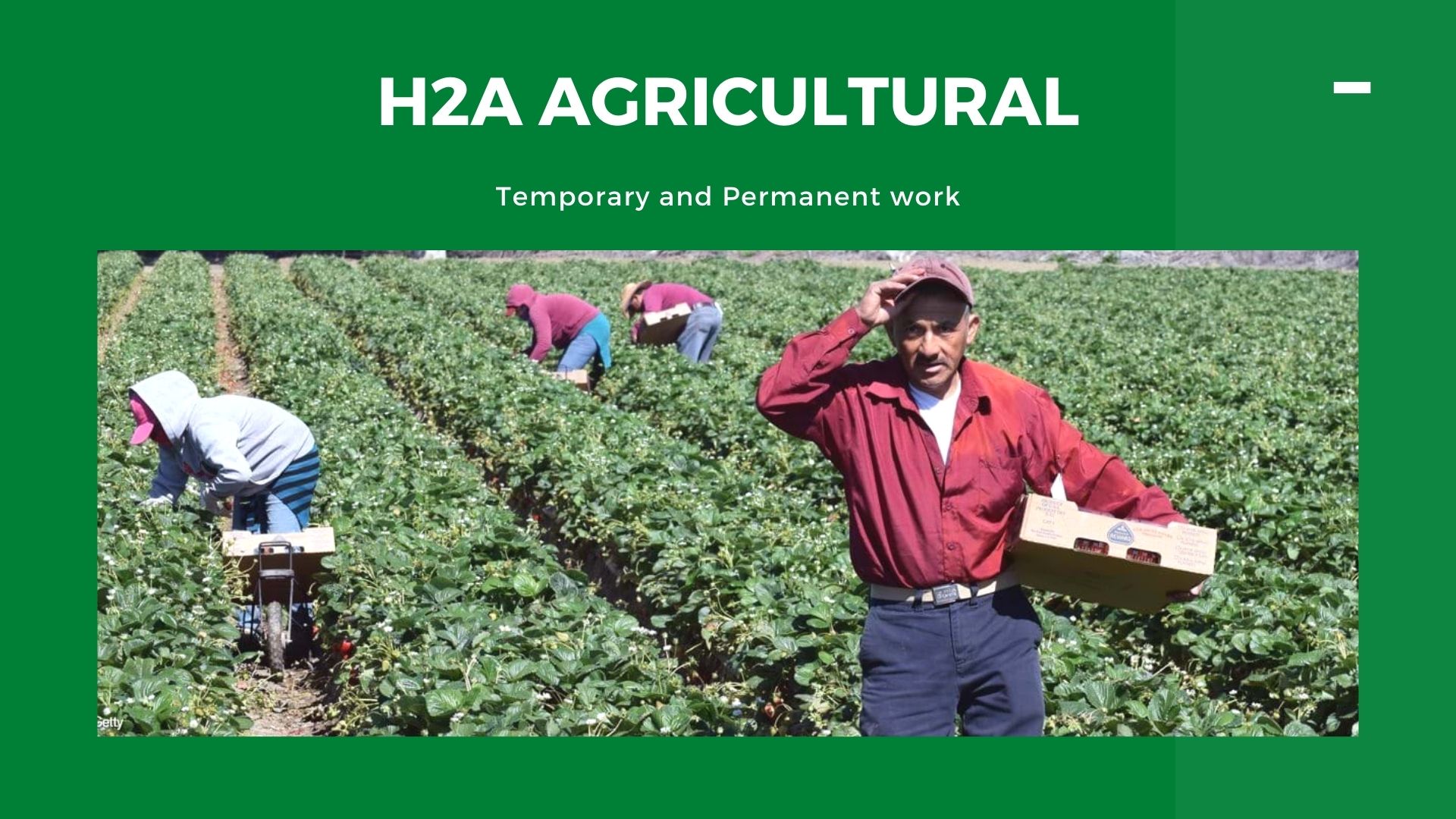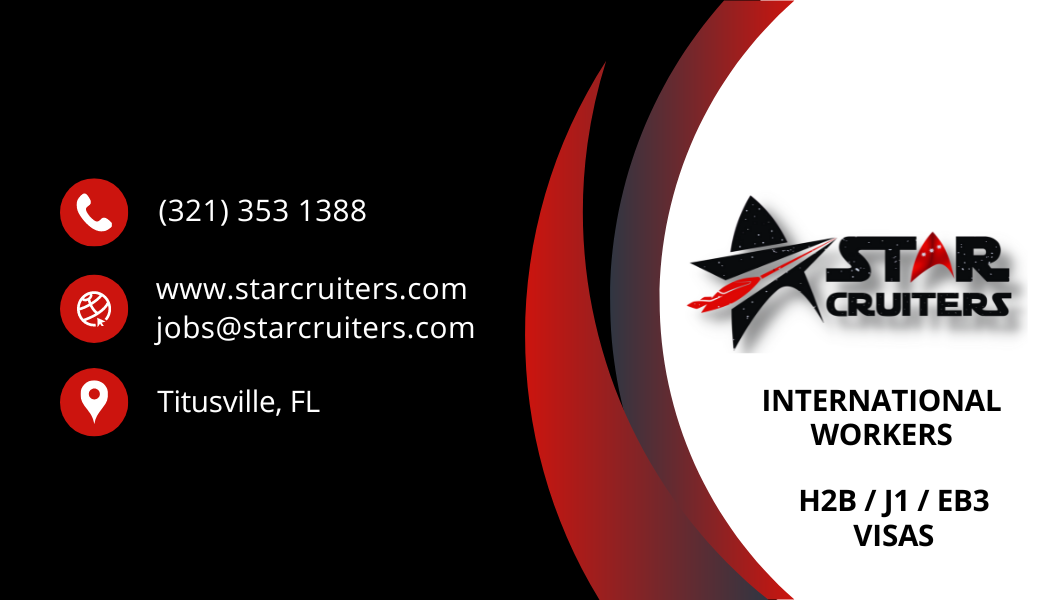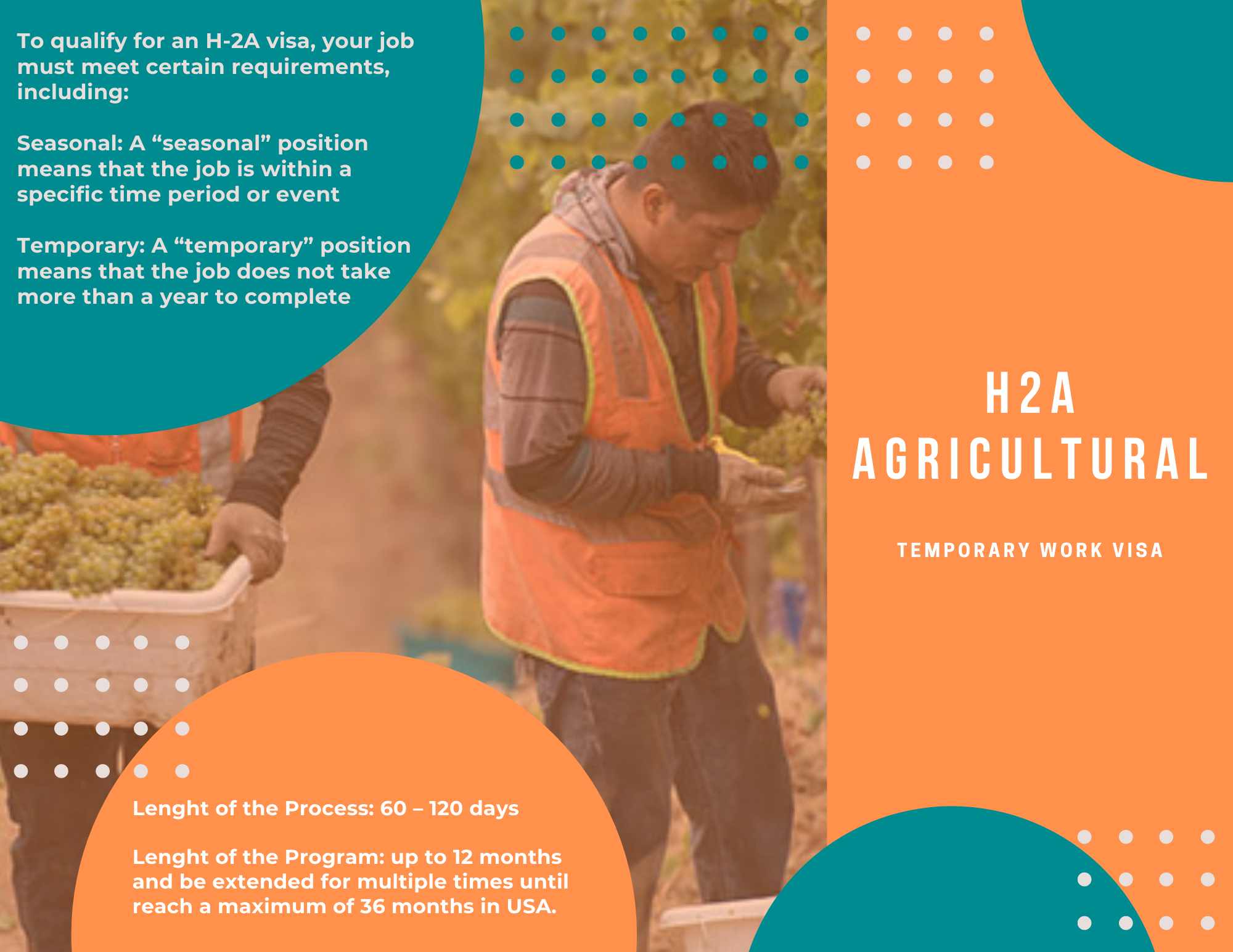H2A - AGRICULTURAL
The H-2A program allows U.S. employers or U.S. agents who meet specific regulatory requirements to bring foreign nationals to the United States to fill temporary agricultural jobs. a U.S. employer, a U.S. agent as described in the regulations, or an association of U.. agricultural producers named as a joint employer must file form I-129, petition for a nonimmigrant worker, on a prospective worker’s behalf.
H-2A Visa Program
Are you a farmer who needs seasonal or temporary workers for planting, cultivating, and harvesting crops but domestic workers are in short supply?
The H-2A temporary agricultural workers program – often called the H-2A visa program - helps American farmers fill employment gaps by hiring workers from other countries.
Get started here by:
- Learning the H-2A visa application basics
- Creating a personalized H-2A visa application checklist built around your hiring needs
- Estimating the costs of hiring workers through the H-2A visa program
Already started an H-2A visa application? Check the approval status of your cases with the Department of Labor or U.S. Citizenship and Immigration Services. To track the status of your cases over time, sign in or sign up for a farmers.gov H-2A dashboard account through login.gov.
About the H-2A Visa Program
The H-2A temporary agricultural program helps employers who anticipate a lack of available domestic workers to bring foreign workers to the U.S. to perform temporary or seasonal agricultural work including, but not limited to, planting, cultivating, or harvesting labor.
Depending on the type of work you need, temporary or seasonal agricultural work can happen on farms, plantations, ranches, nurseries, ranges, greenhouses, orchards, or other similar locations.
- Seasonal work is when you need more help than usual because the work is tied to a certain time of year by an event or pattern, like a short annual growing cycle.
- Temporary work lasts no longer than 1 year.
If you have been affected by a strike, work stoppage, or layoff within 60 days of when work will start, you may not qualify for the program.
To participate in the program, you’ll work with your State Workforce Agency to earnestly recruit U.S. workers. The State Workforce Agency will publicly post your job order to recruit U.S. workers. You must accept eligible referrals of U.S. workers who apply for the job, and also contact any former U.S. employees at their last known contact address. When a qualified U.S. worker applies, you must employ them until 50 percent of the work period specified in the work contract has passed. After 50 percent, there is no continued affirmative obligation to hire.

H-2A Program Process
- Step 1: Petitioner submits temporary labor certification application to the U.S. Department of Labor (DOL). Before requesting H-2A classification from USCIS, the petitioner must apply for and receive a temporary labor certification for H-2A workers from DOL. For further information regarding the temporary labor certification requirements and process, see the Foreign Labor Certification, Department of Labor Web page.
- Step 2: Petitioner submits Form I-129 to USCIS. After receiving a temporary labor certification for H-2A employment from DOL, the petitioner must file Form I-129 with USCIS. With limited exceptions, the petitioner must submit original temporary labor certification as initial evidence with Form I-129. (See the instructions to Form I-129 for additional filing requirements.)
- Step 3: Prospective workers outside the United States apply for visa and/or admission. After USCIS approves Form I-129, prospective H-2A workers who are outside the United States must:
- Apply for an H-2A visa with the U.S. Department of State (DOS) at a U.S. Embassy or Consulate abroad and then seek admission to the United States with U.S. Customs and Border Protection (CBP) at a U.S. port of entry; or
- Directly seek admission to the United States in H-2A classification with CBP at a U.S. port of entry, if a worker does not require a visa in cases where an H-2A visa is not required.

Period of Stay
Generally, USCIS may grant H-2A classification for up to the period of time authorized on the temporary labor certification. H-2A classification may be extended for qualifying employment in increments of up to 1 year each. A new, valid temporary labor certification covering the requested time must accompany each extension request. The maximum period of stay in H-2A classification is 3 years.
A person who has held H-2A nonimmigrant status for a total of 3 years must depart and remain outside the United States for an uninterrupted period of 3 months before seeking readmission as an H-2A nonimmigrant. Additionally, previous time spent in other H or L classifications counts toward total H-2A time.
Exception: Certain periods of time spent outside of the United States may “interrupt” an H-2A worker’s authorized stay and not count toward the 3-year limit. See the Calculating Interrupted Stay for H-2 Classifications Web page for additional information.

Family of H-2A Workers
An H-2A worker’s spouse and unmarried children under 21 years of age may seek admission in H-4 nonimmigrant classification. Family members are not eligible for employment in the United States while in H-4 status.
An H-2A worker’s spouse and unmarried children under 21 years of age may seek admission in H-4 nonimmigrant classification. Family members are not eligible for employment in the United States while in H-4 status.

